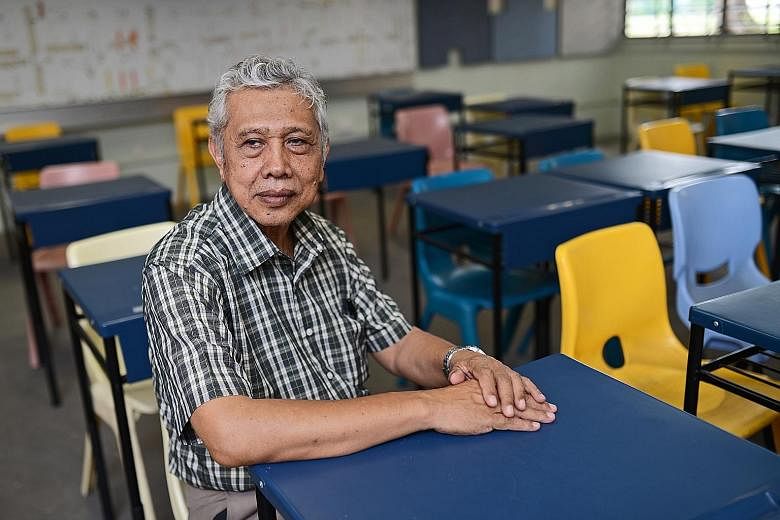As a young man, Mr Sapii Osman had thought of moving to the Malaya states to become a soldier when Singapore was part of Malaysia.
He had completed his Secondary 4 education at the Sang Nila Utama Secondary School in Aljunied in 1963 and was looking for something to do.
But in 1964, when a chance came up for him to become a cikgu (teacher), he took it - and has never looked back since. "It was one of the best-paying jobs," said Mr Sapii, now 71 and a contract teacher at Jurong Secondary School.
At the end of 1965, Education Minister Ong Pang Boon had spoken of plans to ramp up teacher recruitment and to build a second teachers' training college here.
Mr Sapii was first paid $172 a month as a Malay language teacher at a now defunct primary school in Jurong.
In 1965, he started going for classes at the Teachers' Training College at Paterson Road three times a week, while still teaching.
One of his main challenges was to get up to speed with English, as most of the lessons and reading materials were in the language.
"If we didn't know English, it was hard to communicate," said Mr Sapii, who had started learning the language only from Standard 7, roughly the equivalent of Primary 6 now.
After three years at the college, Mr Sapii was posted to Sungei Kadut Primary School.
In 1973, he was transferred to Jurong Secondary, which offered both English and Chinese mediums of education, to become its first Malay language teacher.
Back then, the school was located in a Chinese kampung in Jurong and had fewer than 20 Malay students.
Mr Sapii taught all of them, from Secondary 1 to 4.
"At that time, it was very easy to teach," he said, noting the small number of students.
The tricky task was setting exam papers, he recalled, as these were prepared on typewriters in the days before computers became common.
"It takes time. If there's a mistake, I have to cross (it) out with Liquid Paper (a white correction fluid)," he explained.
It has become more challenging to teach these days, with students being more exposed to English and weaker in Malay in general, he said.
"Last time, they were ready to study. Now, it takes time to settle some of them down," he added.
While Mr Sapii did not become a soldier, he got to go on expeditions to places like Pulau Ubin and Gunung Ledang (Mount Ophir) in Malaysia as the teacher in charge of the National Police Cadet Corps and then the Scouts at Jurong Secondary School.
The grandfather of five has been at Jurong Secondary for so long that he has taught three generations of the same family.
Said a smiling Mr Sapii: "Last time, I taught the mother, then the son. Now even the grandchildren."


